The Harvey Girls

Brief Synopsis
Cast & Crew
George Sidney
Judy Garland
John Hodiak
Ray Bolger
Angela Lansbury
Preston Foster
Film Details
Technical Specs

Synopsis
In the 1880's, as the Santa Fe rail line expands westward into the American frontier, Harvey House restaurants open one after another at train stops along the way. Hoping to find work at Harvey's newest restaurant in Sand Rock, New Mexico, young women from all over the country board trains for the small Western town. With few exceptions, most of the young women traveling to Sand Rock are going there to work for the Harvey House. Susan Bradley, however, is going there to meet H. H. Hartsey, an eloquent letter-writer whom she has never met, but has consented to marry. En route to Sand Rock, Susan befriends some of the waitresses. Soon after arriving in Sand Rock, Susan meets the roughhewn Hartsey, but they both immediately agree that they are mismatched and call off the wedding. When Hartsey tells Susan that his letters were written by Ned Trent, co-owner of the Alhambra Saloon, she marches over there and calls Ned a "yellow dog." Trent tries to make amends with Susan by offering to pay her way back to Ohio, but she refuses to take his money and promises to run him and his disreputable saloon out of town. Soon after taking a job at the Harvey House, Susan proves her resolve to get tough with the Alhambra when she bursts into the saloon with two six-shooters, and demands the return of meat stolen from the Harvey House.
One night, when Alhambra men fire a shot into the Harvey Girls' dormitory, Susan and other waitresses declare that the feud between the two establishments has officially begun. Susan sets out to find the culprit, and at the Alhambra, she is confronted by Em, a sharp-witted, jealous barmaid who is in love with Ned. Susan later finds Ned alone in a remote valley, and the two spark a romance. They seal their love with a kiss and return to town, where Ned, hearing screams coming from the Harvey House, shoots a rattlesnake that was placed there by his nefarious business partner, Judge Sam Purvis. Ned warns Purvis to stop harassing the Harvey Girls, but when plans are announced to move the Alhambra to Flagstaff, Arizona, Purvis sets fire to the restaurant. The Harvey Girls lose their restaurant in the blaze, but Ned sees to it that they are able to reopen it in the Alhambra saloon. As the employees of the Alhambra prepare to leave Sand Rock for Flagstaff, both Susan and Ned decide at the last minute to leave their work and start a new life together. In the confusion of the train station, however, Susan and Ned nearly miss each other. Em, who has a change of heart, reunites the couple by pulling the emergency brake cord to stop the train.

Director
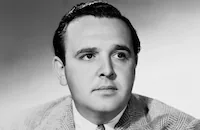
George Sidney
Cast

Judy Garland

John Hodiak

Ray Bolger

Angela Lansbury

Preston Foster

Virginia O'brien

Kenny Baker

Marjorie Main
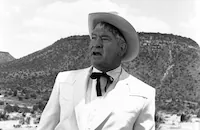
Chill Wills

Selena Royle
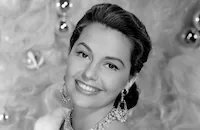
Cyd Charisse
Ruth Brady
Jack Lambert
Edward Earle
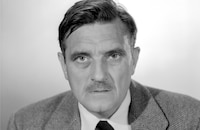
Morris Ankrum
Wm. "bill" Phillips
Ben Carter
Norman Leavitt

Horace Mcnally
Catherine Mcleod
Virginia Hunter
Bill Hall
Al Rhein
Charles Regan

Lee Phelps
John Merton
Tom Quinn
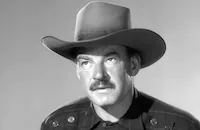
Ray Teal
Robert E. O'connor
Paul Newlan
Al Kunde
Frank Austin
Tex Cooper
Vincent Graeff
Sam Garrett
Thelma Joel
Gwen Donovan
Katherine York
Georgia Davis
Eleanor Troy
Dallas Worth
Dona Dax
Vera Lee
Emily Smith
Herberta Williams
Edith Motridge
Melba Snowden

Jane Hale
Virginia Engels
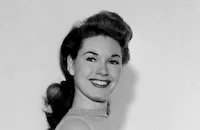
Shirley Patterson
Dorothy Tuttle
Meredyth Durrell
Eleanor Bayley
Dorothy Gilmore
Lucille Casey
Virginia Casey
Mary Mullen
Joan Carey
Ruth Merman
King Charles, A Horse
Loulie Jean Norman
Dorothy Jackson
Judy Matson
Mary Moder
Ruth Clark
Jimmie Garland
Dorothy Wilkerson
Vivian Edwards
Joe Karnes
Kenneth Rundquist
Claude Martin
Arnet Amos
Crew
Robert Akst
Robert Alton
Edmund Beloin
Robert Bronner
Earl Cates
Harry Crane
Nathaniel Curtis
Mark Davis
Jack Dawn
Marion Doenges
Roger Edens
William R. Edmondson
William Ferrari
George Folsey
Arthur Freed
Cedric Gibbons
A. Arnold Gillespie
Eleanore Griffin
Mildred Griffiths
Lennie Hayton
Irene
Henri Jaffa
Natalie Kalmus
Standish J. Lambert
M. J. Maclaughlin
Johnny Mercer
Warren Newcombe
James O'hanlon
William Rankin
Samson Raphaelson
Virginia Rees
George Rhein
George Richelavie
Helen Rose
Conrad Salinger
Douglas Shearer
Robert W. Shirley
Newell Sparks
William Steinkamp
Michael Steinore
Kay Thompson
Valles
Kay Van Riper
Harry Warren
Bea Whitney
John A. Williams
Edwin B. Willis

Photo Collections
Videos
Movie Clip




Trailer
Hosted Intro





Film Details
Technical Specs

Award Wins
Best Song
Award Nominations
Best Score
Articles
The Harvey Girls
The story started as a novel by Samuel Hopkins Adams based on the real-life restaurant chain that had helped civilize the West. With waitresses of certified good character, the Harvey houses provided a reliable source of family dining for travelers in the Southwest during the latter part of the 19th century.
MGM originally bought rights to the novel in hopes that it would inspire a dramatic film for rising star Lana Turner. Then associate producer Roger Edens saw a tryout performance of Oklahoma! in New Haven. He knew a hit when he saw it and realized that the trailblazing musical probably wouldn't be available to the screen for years (it wasn't filmed until 1955). So he came up with the idea of turning The Harvey Girls into a western musical at MGM, with Judy Garland as a high-spirited waitress.
Only Garland wasn't interested. She had wanted to work with Fred Astaire for years and thought a project Arthur Freed was developing for him, Yolanda and the Thief (1945), would finally give her the chance. In addition, her husband, Vincente Minnelli was directing it, and the two were trying to work together whenever possible. Edens convinced her that the female lead in Yolanda and the Thief wouldn't be a big enough role for her, and promised that The Harvey Girls would be built around her talents.
It took eight writers to turn The Harvey Girls into a movie, with Samson Raphaelson, who had written some of Ernst Lubitsch's best films, tying them all together. The result was a showcase for Garland's comic, dramatic and musical skills, while also offering juicy supporting roles to deadpan comedienne Virginia O'Brien, sultry Angela Lansbury and a young dancer named Cyd Charisse, who had her first speaking part in the picture.
Best of all was the score by Harry Warren and Johnny Mercer, which included a tribute to the railroad that helped win the West, "On the Atchison, Topeka and the Santa Fe." The number was inspired by Garland's hit from Meet Me in St. Louis (1944), "The Trolley Song," and like it was almost an instant hit. Garland recorded it on her own, but the top-selling version featured lyricist Johnny Mercer and the Pied Pipers. It held the number one spot on the hit parade for eight weeks. As was the custom then, MGM released the song to recording companies before the film was even finished. In fact, Bing Crosby's version of it was playing on the radio as director George Sidney drove to MGM to film the number.
"On the Atchison, Topeka and the Santa Fe" picked up the Oscar® for Best Song, the first of four awards Mercer would receive in that category. But even on Oscar® night there was a crisis. Garland had been scheduled to perform the song, but came down with stage fright at the last minute. Bing Crosby would have been the logical choice to replace her, and he had been scheduled to sing another song, but then he got stage fright. Finally, Dinah Shore, who also was scheduled to perform, agreed to do the number.
Director: George Sidney
Producer: Arthur Freed
Screenwriter: Edmund Beloin, Harry Crane, Nathaniel Curtis, James O'Hanlon, Samson Raphaelson
Cinematographer: George Folsey
Composer: Lennie Hayton, Harry Warren
Editor: Albert Akst
Art Director: William Ferrari, Cedric Gibbons
Songwriter: Roger Edens, Johnny Mercer, Kay Thompson
Costume Designer: Helen Rose, Irene Valles
Cast: Judy Garland (Susan Bradley), John Hodiak (Ned Trent), Ray Bolger (Chris Maule), Angela Lansbury (Em), Marjorie Main (Sonora Cassidy), Cyd Charisse (Deborah), Ben Carter (John Henry).
C-102m. Closed captioning. Descriptive video.
by Frank Miller

The Harvey Girls
Quotes
Trivia
Marion Doenges dubbed Cyd Charisse' singing.
Byron Harvey Jr., who plays the uncredited role of a train conductor who keeps good time, was the grandson of Fred Harvey and President of the Fred Harvey Company at the time of the filming.
Angela Lansbury was often hissed at in public after this film was released, simply because she played Judy Garland's rival, and Garland was so beloved.
Alma, the character, portrayed by Virginia O'Brien, is noticeably absent from the movie after she sings her "Wild, Wild West" song number. She was pregnant at the time she made this movie and this may account for her absence.
Virginia O'Brien is noticeably absent from the second half of the film, right after her "Wild, Wild West" number, mostly because she was pregnant during filming.
Notes
The film's opening credits acknowledge the "help of the Fred Harvey Company on many historical details" in the picture. The following written dedication appears at the beginning of the film, after the opening credits: "When Fred Harvey pushed his chain of restaurants farther and farther west along the lengthening track of the Santa Fe, he brought with him one of the first civilizing forces this land has known-The Harvey Girls. The winsome waitresses conquered the West as surely as the Davy Crocketts and the Kit Carsons-not with powder horn and rifle, but with a beefsteak and a cup of coffee. To these unsung pioneers, whose successors today still carry on in the same tradition, we sincerely dedicate this motion picture."
Although the story of the film is fictional, many of the pictured details concerning the establishment of Fred Harvey restaurants across the western United States in the late 1800's are based in fact. The first Harvey House opened in Topeka, KS in the late 1870's, after which many more were established along the Santa Fe rail line west to the Pacific coast. The opening credits indicate that the picture was based on Samuel Hopkins Adams' novel and on an original story by Eleanore Griffin and William Rankin. A Variety news item reported that a U.S. District Court judge ruled in Loew's, Inc.'s favor in a suit filed by former Santa Fe railroad man Clifford Funkhouser, who alleged that M-G-M had "pirated" his story about the famed Harvey girls.
An M-G-M News item found in the AMPAS Library production file on the film, and believed to be from 1944, notes that actress Ann Sothern was set for a starring role in the film along with Judy Garland. A January 1944 New York Times news item noted that Lana Turner would "most likely" be starred in the film. Although a December 1944 Hollywood Reporter news item stated that Edward Arnold was cast in the part of "the big town boss," and although he was listed in the cast in the Hollywood Reporter production charts, he did not appear in the released film. According to M-G-M studio publicity information, "King Charles," the horse that Preston Foster rode in the film, was the same horse featured in the 1944 M-G-M film National Velvet (see below). Studio records also indicate that two years of research was completed to recreate the film's authentic sets and backgrounds of late nineteenth century New Mexico. Props for the Alhambra Bar and Dance Hall were rented from the Pony Express Museum. A February 1945 Hollywood Citizen-News article noted that two units were used to shoot background scenes. Some filming took place in Victorville and Chatsworth, CA, and in Monument Valley, AZ. According to modern sources, writer Hagar Wilde was assigned to the film. Modern sources also note that some scenes between Ray Bolger and Virginia O'Brien were cut from the final film, and that other scenes between them were never filmed because O'Brien's pregnancy was becoming noticeable.
Three Johnny Mercer and Harry Warren songs that were recorded for the film but cut before its release were: "March of the Doagies," "Hayride" and "My Intuition." Warren and Mercer received an Academy Award for their song "On the Atchison, Topeka and the Santa Fe," and Lennie Hayton received a nomination for his musical score.















